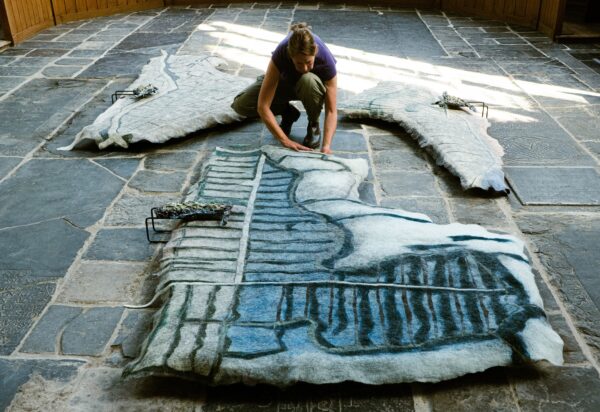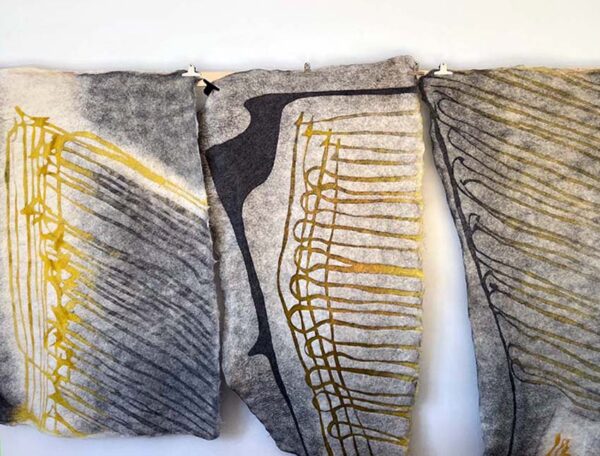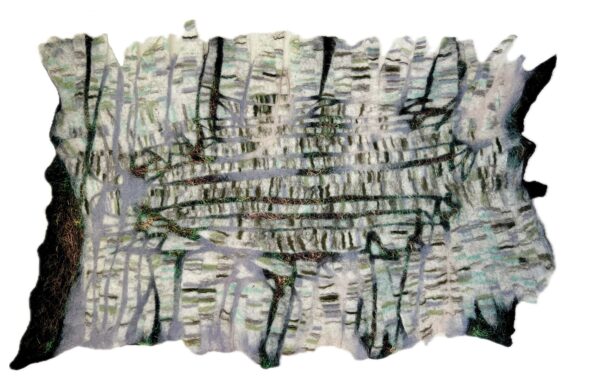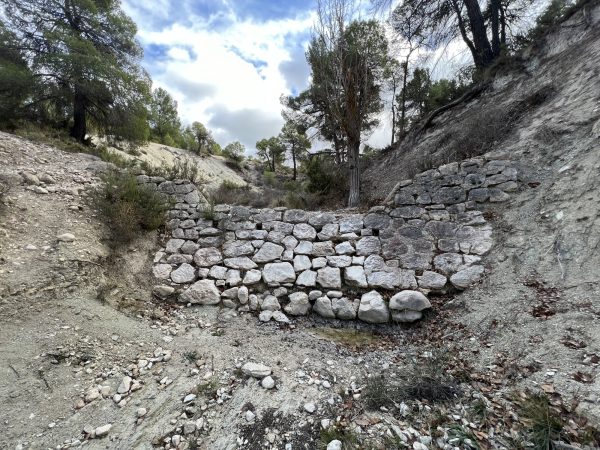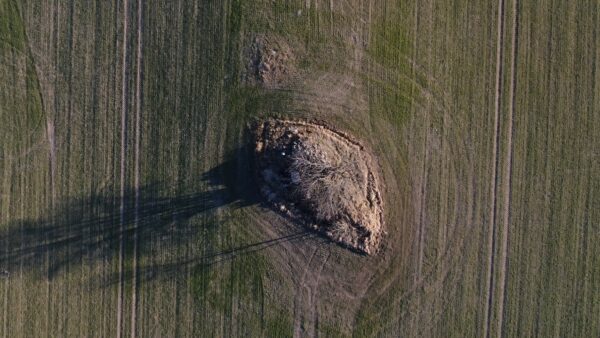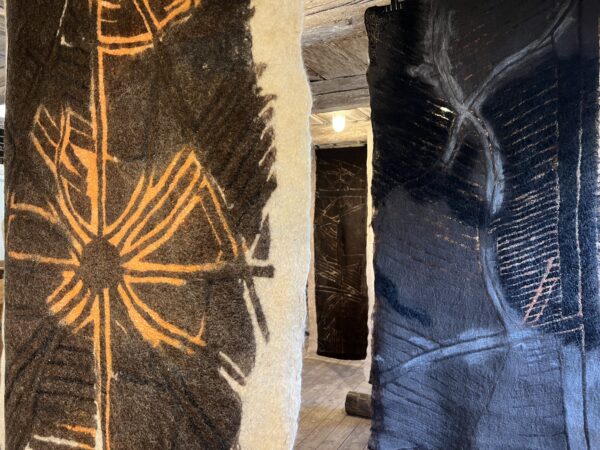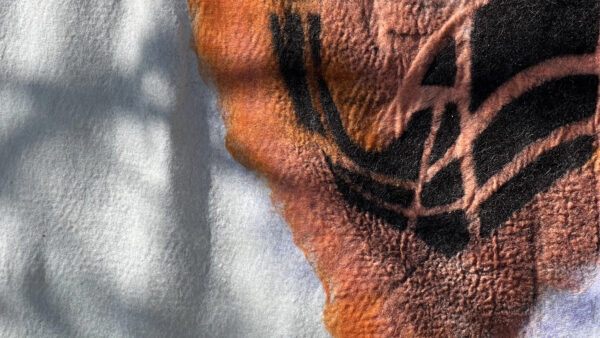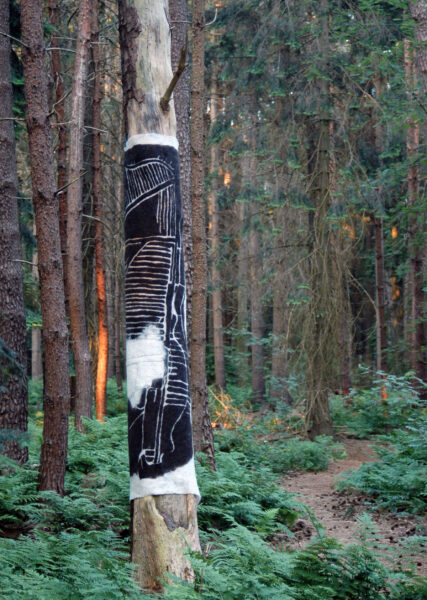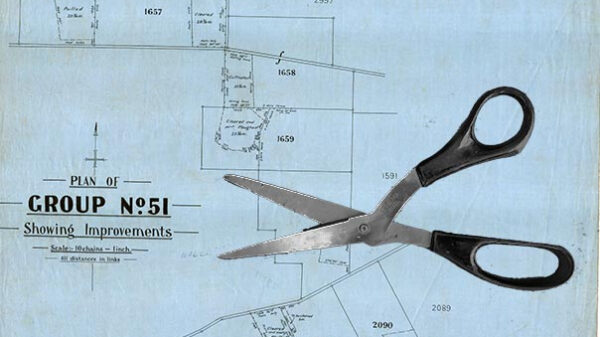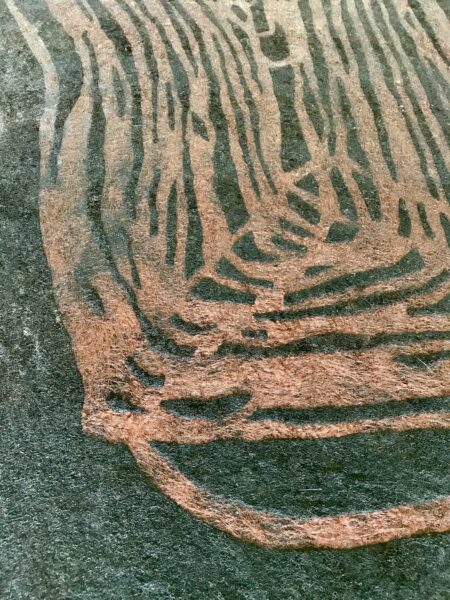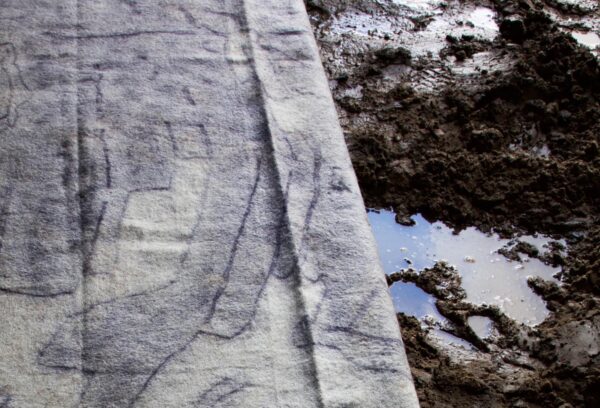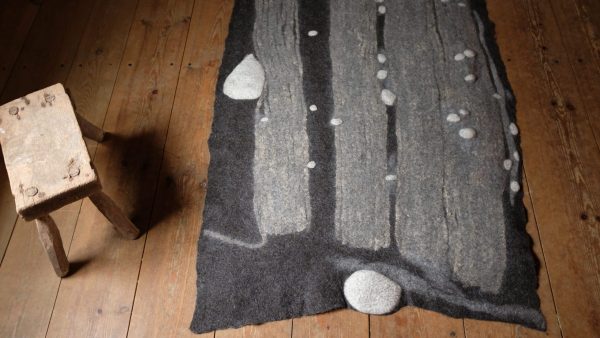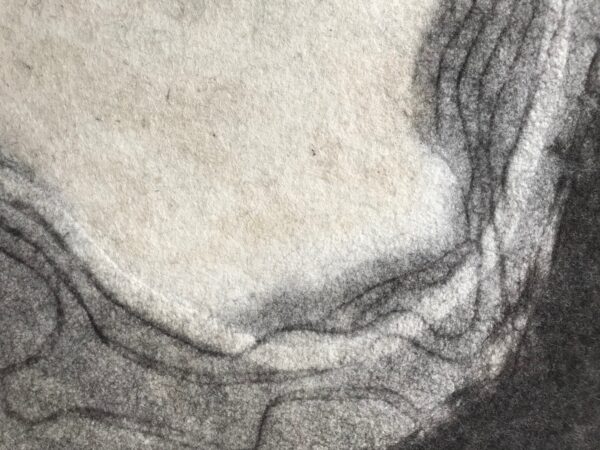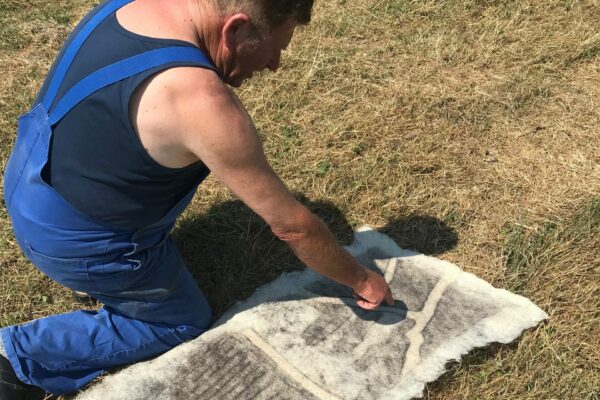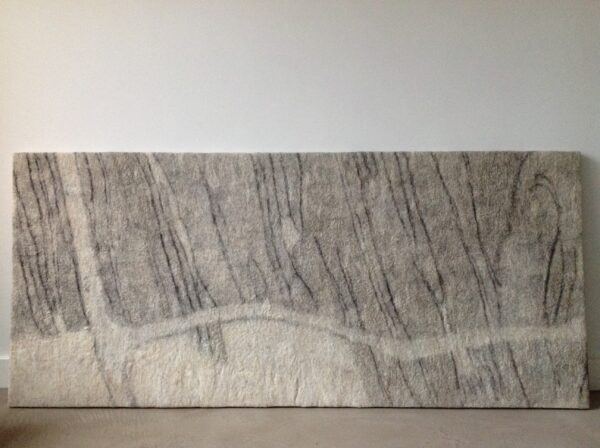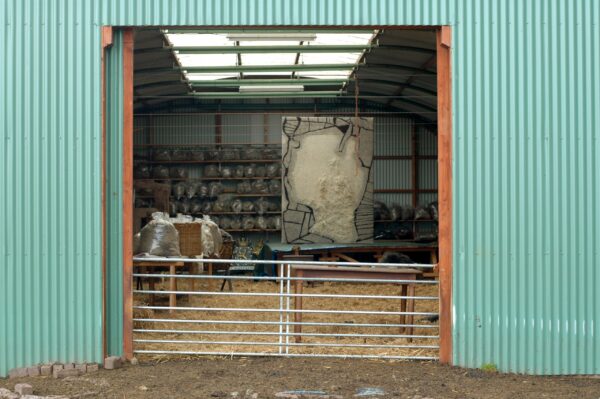Deeply Rooted

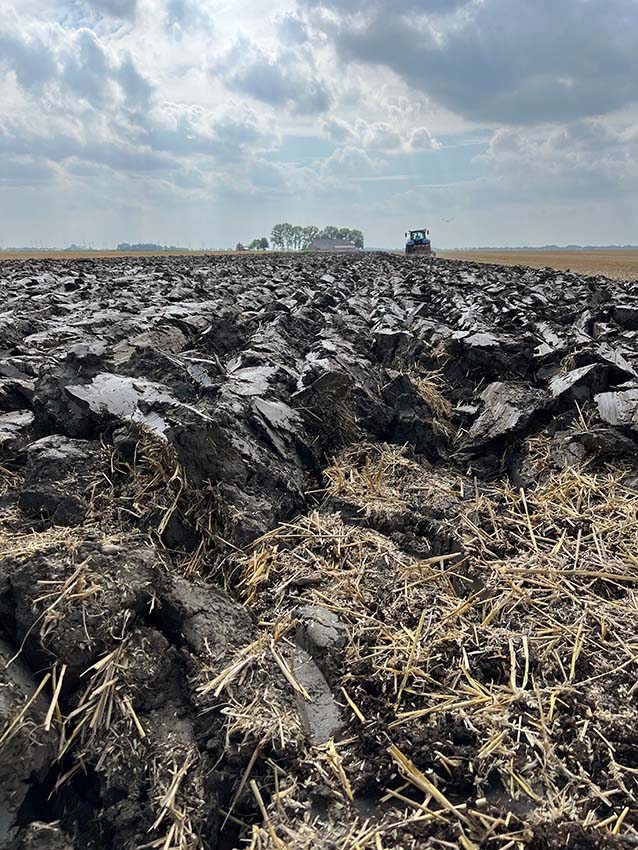







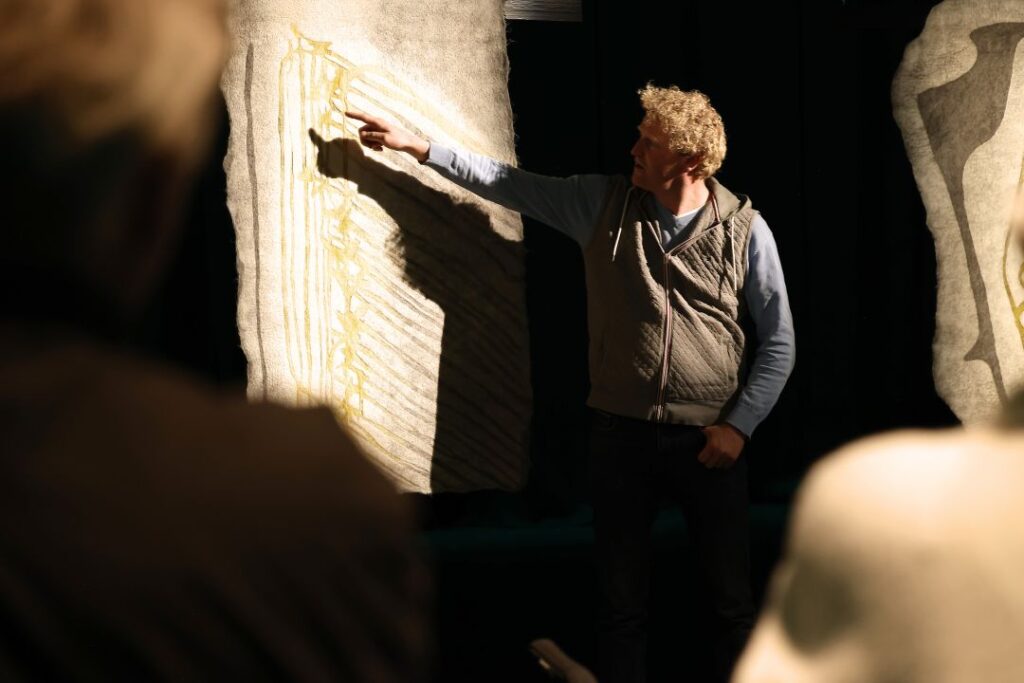
title: Deeply Rooted
location: Oldambt, Nederland
material: Woolblend with Oldambster sheepwool
project: FieldLab Deeply Rooted, Graanrepubliek 2.0
date: 2024-25
Sensing Soil
If you could run a large hand over the soil of the agricultural fields of Oldambt, you would feel a smooth surface, occasionally interrupted by a ridge in the form of a dike. The high sea dike at the Dollard forms a hard boundary between the rugged salt marshes and the young sea clay polders. If you run your hand from the Dollard southwest towards Winschoten, you will feel that the dikes become softer and rounder. These are the sleeper dikes that are often intersected by roads. Many of these old dikes, which once held back the seawater, have disappeared, smoothed out, and incorporated into the agricultural fields. The dikes and dike relics have become heritage and are now characteristic landscape elements that together form the skeleton of Oldambt.
Once your fingers are accustomed to the earth’s surface and your fingertips have become more sensitive, you could let your fingers run through the crops. Depending on the season, you will feel the crackling black chaff of the mowed field beans or the golden yellow grain, which grows like a warm, wavy coat on the fertile clay. If you are just too late and the harvest has already been done, there is a good chance that your fingers will slide through the clay and the coarse blocks of freshly ploughed land will stick to your fingers.
As a map-making artist, I read the traces on the surface of the landscape as a story about the dwelling and livelihood of its inhabitants. The surface of the landscape, shaped by nature and cultivated by humans, connects us to the landscape and our past. However, due to innovations in agriculture, the crust of our earth seems to become smoother, making the traces unreadable. How easy is it to push aside old traces like ditches, trenches, dikes, and paths with large machines? Climate changes also bring heavy rainfall and higher water levels, and I see that arable farmers must anticipate salinization, erosion, and either a lack or excess of rainwater on the land. In this project, I research the effect of agricultural innovations that determine the diversity of our landscape. Will it become monotonous, vulnerable, and fragile? And how do arable farmers experience their connection to the land? Do they see their plots as part of the landscape for which they feel responsible, or is it only considered a business model?
In the far northeast of the Netherlands, I collect stories about arable farmers and their connection to the land on the large plots of fertile young sea clay. Armed with a GPS tracker, I set out and ask them to record the lines of their operations on the land so that we can discuss the stories these lines tell.
FieldLab “Deeply Rooted” has been made possible through the collaboration of various entrepreneurs in Oldambt, the Municipality of Oldambt, and the research group “Living Environment in Transition,” which is part of the Knowledge Center NoorderRuimte.
